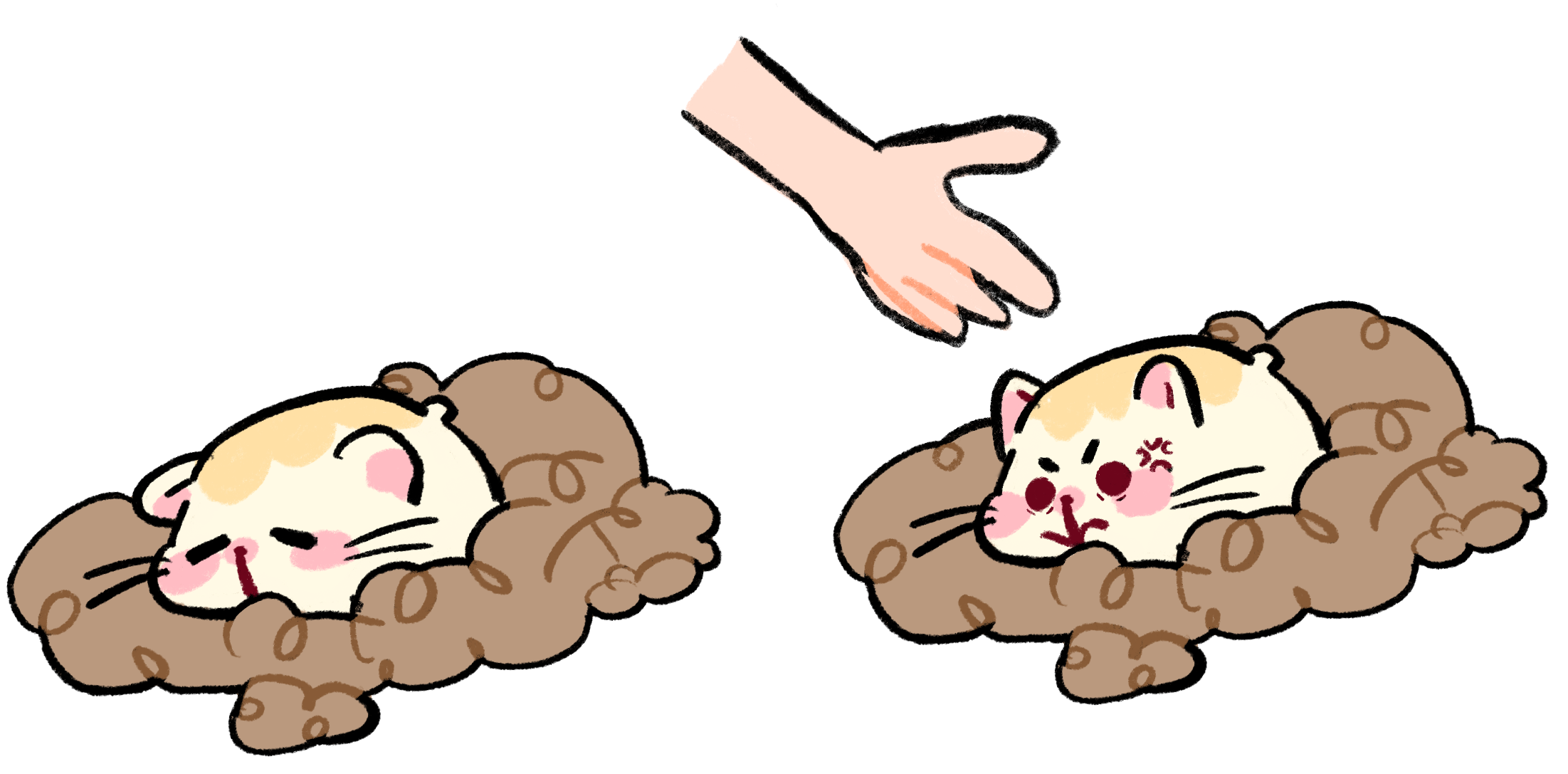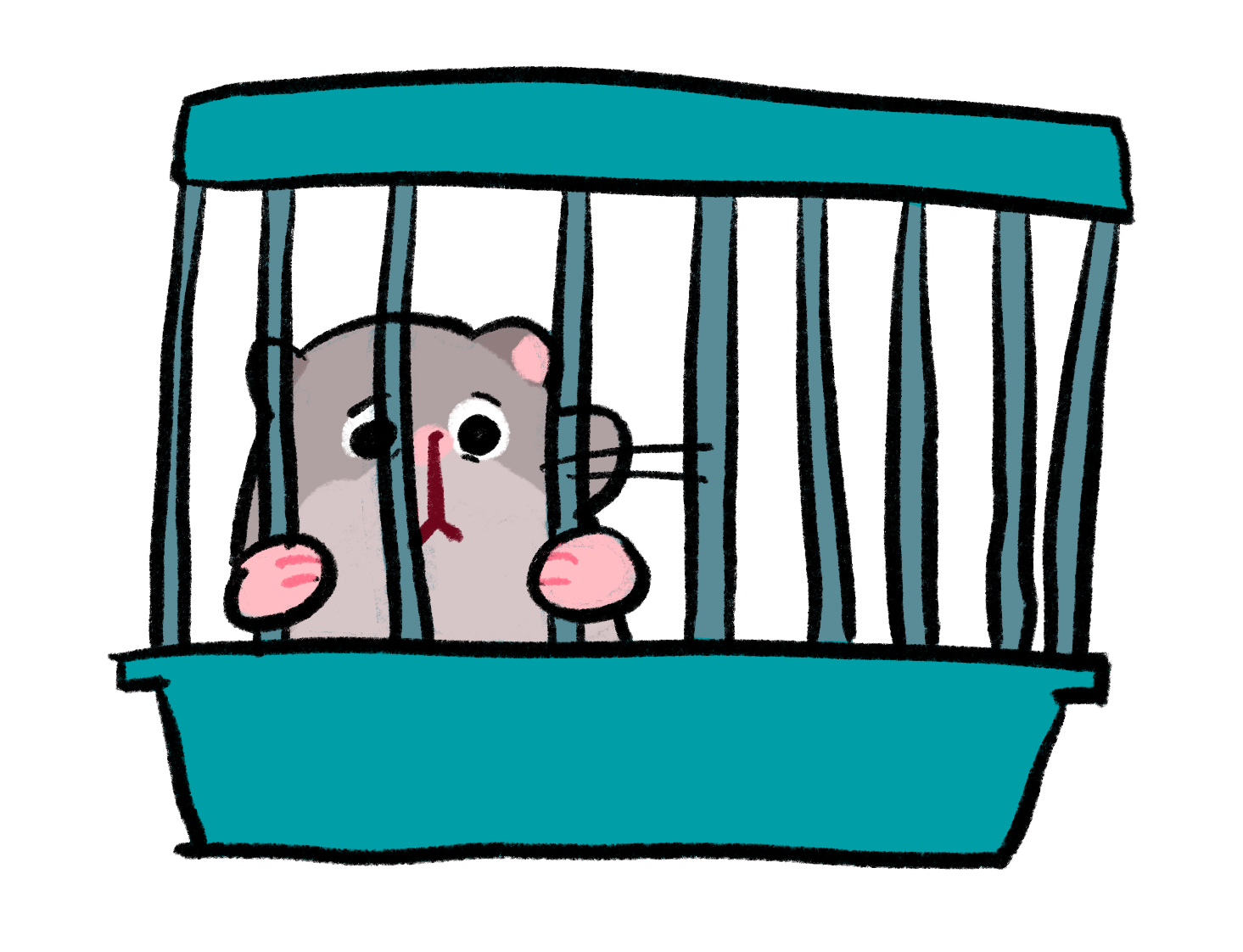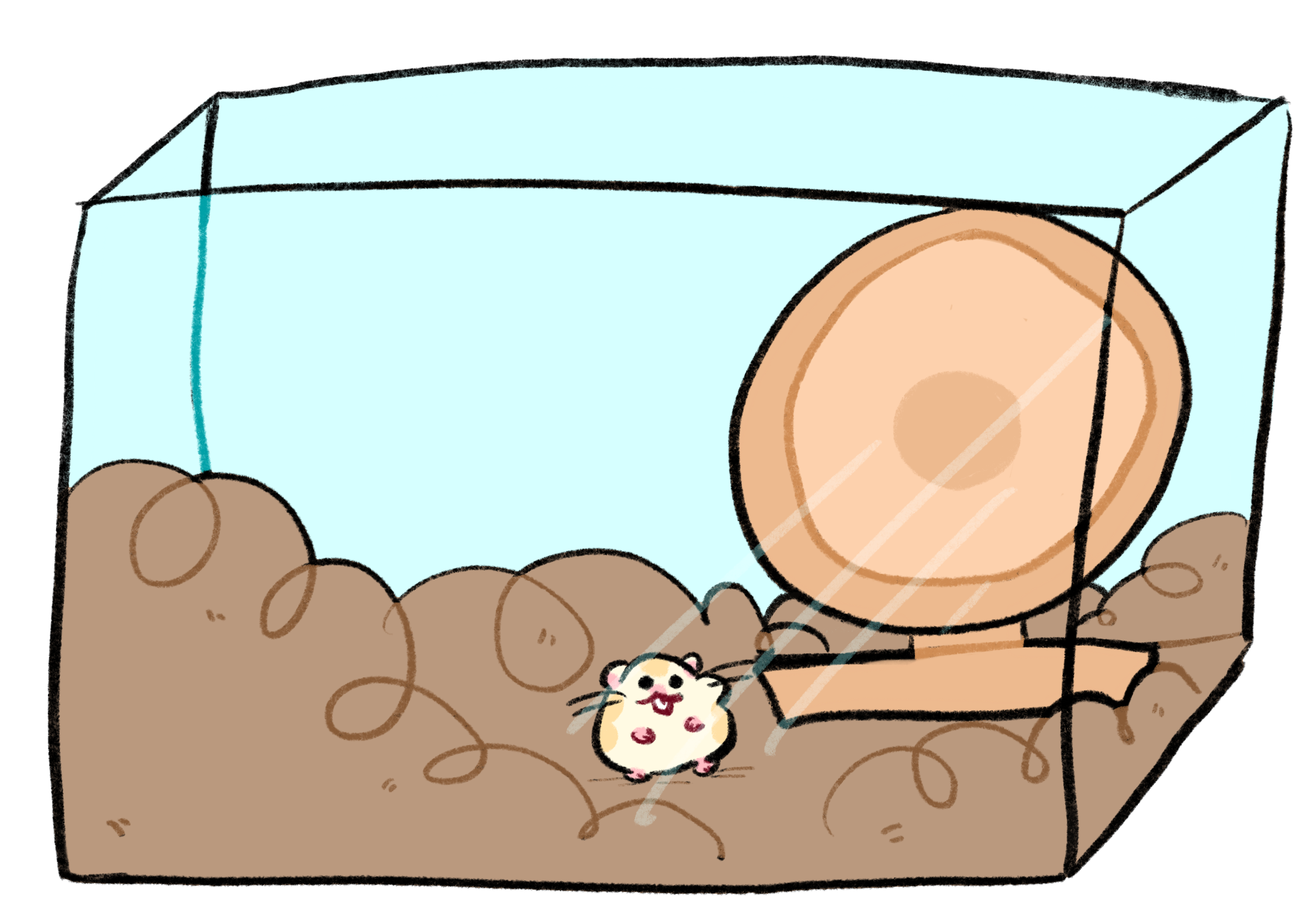TLDR;
Only handle your hamster when it is comfortable.
Unhappy/stressed hamster = an aggressive hamsterGive your hamster ample space.
Bigger cage = less aggressive/more tameable hamsterPatience, patience, love and more patience!
Taming takes time and will only happen if you respect and follow your hamster’s pace.Manage your expectations.
Some hamsters are harder to tame than others but all hamsters are equal in deserving our love and care.
How to Tame a Hamster?
Same as you do dragons - with patience and love!
Hamsters tend to be skittish because they are prey in the wild, but with the correct methods and some hard work, pawrents can bond successfully with their hamsters and enjoy cuddling sessions with these naturally shy creatures.
This article will give you an overview of the taming process and introduce the different methods available. If your hamster is already tamed and does not bite, you can still try some of these methods to bond even more with your hamster.
Managing Expectations:
Young hamsters are more easily tamed than older ones.
Some hamsters may respond better to these taming methods than others.
A poor response may indicate the presence of trauma or an inherently wild character.The duration of the taming process varies greatly from hamster to hamster.
Occasionally, it can take several months.
Things to note:
A willing hamster
Only practise these taming and bonding methods when your hamster is awake and willing to participate.Stress-free environment
Ensure your hamster is in a spacious cage/area where it feels at ease and even curious.Consistency and patience
Interact and handle your hamster daily. If the taming process is paused, any progress made is likely to be lost.
Preparation:
Antiseptic Wipes
When bitten by your hamster during the taming process, squeeze the blood out of the wound and wipe it with antiseptic wipes.Gloves
If your hamster is particularly aggressive, use gloves at the beginning of the taming process to protect your hands. Once the biting becomes infrequent, switch back to using your hands, as your hamster needs to get used to your scent and the feel of your bare hands to be properly tamed.Playpen
For taming your hamster outside of the cage.
Bringing a New Hamster Home
Allow the hamster a week to familiarise itself with its new environment.
Rub the bedding with your hands so that your hamster is used to your scent.
Talk to your hamster gently so that it can recognise your voice.
Hand feed your hamster, especially at night when it is active. Once it is comfortable enough to take treats from your hands, place the treats on your palm so that it will have to willingly climb into your hands to get its treats.
In the event that your hamster is fiercely territorial and does not appreciate your hand in the cage, skip this step.
Pat and stroke your hamster whenever it is distracted with munching on goodies and treats, which are an integral part of the taming process, as it encourages hamsters to become “food-motivated’ and associate your presence with yummy snacks. Seeds (sunflower, pumpkin) and nuts (peanut, walnut, pine) in particular are well-loved by hamsters. As much as your hamster may go nuts for nuts (and seeds), they are not suited for everyday consumption. Healthier alternatives like dehydrated tofu treats (insert pic of marukan), rolled oats, and small chunks of vegetables can be consumed on a frequent basis without causing your hamster’s weight to balloon.
Outside the Cage: Playpen Time!
Once your hamster is comfortable with taking food from you and letting you stroke it, it is ready to spend time outside of the cage.
Coax your hamster into a small cup with the help of a treat and transfer it to the designated playpen area. You can opt transfer some of the toys from the cage or other hamster-safe toys to the playpen area to provide some playtime enrichment.
Alternatively, you can just stay seated and still to let your hamster get acquainted with your scent and presence. When your hamster seems calm, try patting it and giving it some treats.
Limit playpen time to 10-15 minutes.
Outside the Cage: Carrying Your Hamster
Once you are sure that your hamster is awake and aware of your presence, talk to it in a gentle voice and slowly inch your hand closer to it.
If your hamster doesn’t seem to flinch or try to run away, gently scoop it up with both of your hands.
Most hamsters will try to wriggle and escape if held so hold them as close to the ground as possible to ensure that they will only fall a short way out of your hands.
Pro tip: Try picking up your hamster when it’s slightly sleepy but still awake. Your hamster is usually more calm when it’s sleepy so there is a better chance of it remaining still in your hands. Caveat: This method does not work for all hamsters, especially for rescues and older hamsters, because they tend to require a safe and dark space to sleep.
Furthermore, even if you manage to successfully tame your hamster, there are many degrees of tameness; Only very few hamsters will feel comfortable enough exposing themselves in vulnerable positions, such as letting you carry them on their backs.
Just as it is unrealistic to expect your family members to look like celebrities, it also unreasonable to expect your tamed hamster to behave like the popular ones on Instagram.
It is said that for every journey we go on, managing our expectations is almost the most important factor to determining our happiness with the destination. As you embark on this adventure of taming your hamster, please bear in mind that its wellbeing should always come first. If your hamster is difficult to tame, learn to admire and celebrate its wild instincts and its drive to protect itself, because all hamsters, wild or tame, are equally deserving of our love, care and respect.
















